The RAV4 Hybrid is the only SUV in its category that is not plug-in, and from a mainstream manufacturer. For a higher price, we have the Mitsubishi Outlander PHEV, which is a plug-in hybrid. If we add more thousands of euros to the equation, we can consider the Lexus NX 300h as an alternative. There's almost 10,000 euros difference, and many drivers will consider it unjustified. The Audi Q5 is discontinued.
We're talking about two cars, RAV4 Hybrid and NX 300h, which share the hybrid system almost piece by piece. With one or two electric motors - front or all-wheel drive - the combined power is the same, 197 hp, and the automatic transmission management is also the same, with false gears, and even the instrument panel. We can consider the RAV4 as a Lexus in disguise, from a certain point of view.
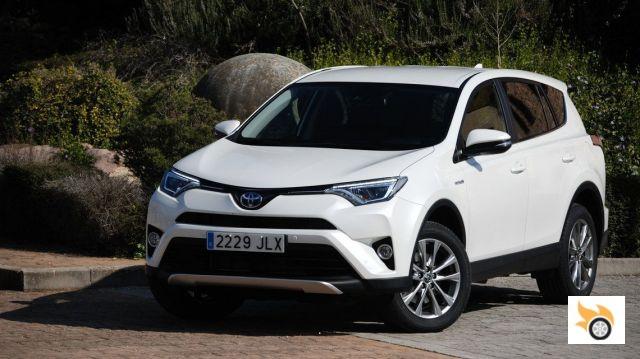
Lexus sells almost everything hybrid, normal petrol options are hardly sold because taxes are linked to consumption, and hybrids have a very low fuel consumption. No hybrid RAV4 will pay registration tax, even if it's 4×4 and with 18″ wheels, but the price without tax is higher than the 150 hp diesel (with BMW sourced engine).
It accelerates from 80 to 120 km/h in 7 seconds, it is also faster than the diesel in acceleration from standstill.
Toyota Spain believes that people will prefer the hybrid mainly because of better performance, superior driving pleasure and, who knows, even possible traffic restrictions for petrol and conventional petrol cars. For example, the RAV4 hybrids could drive in Madrid in pollution scenarios 3 and 4, and that may be of value to people who spend 30,000 euros or more on an SUV.
The offer starts at 29,890 euros for the Advance level with the Drive package and front-wheel drive. This finish will account for the majority of sales, around 65%, according to the brand. In a second step will be the Feel, for 32,990 euros, and at the top the Executive, for 3,000 euros more. All-wheel drive is available for any trim level, for another 3,000 euros.
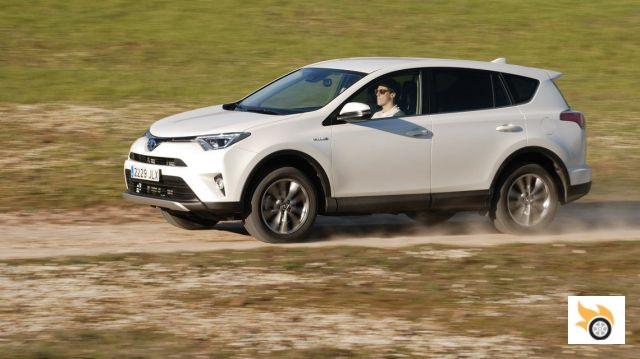
Driving the Toyota RAV4 Hybrid
The new RAV4 basically drives like any automatic transmission SUV, but with the particularity that the petrol engine can be switched off most of the time, depending on the driving conditions and the driver's skill. At the national presentation several journalists found that, although we arrived practically at the same time, there were noticeable differences in consumption between colleagues.
Last year I drove the Lexus NX 300h, and it's practically the same, although I found the RAV4 to have a more comfortable suspension. Whether the RAV4 is equally agile or more clumsy in curves, roundabouts and so on, depends a lot on the tyres used. The units I drove had year-round tyres (M+S), which perform poorly on anything other than legal, quiet driving. There is a high tendency to understeer, but you have to be an animal to lose control of the car. It's just that the wheels give an early warning.
Surely with 100% on-road tires, like the NX 300h unit I tested had, the car will do better on-road, but its off-road performance will go down. You can't have everything. The RAV4 was born as an off-road capable passenger car, but without the drawbacks of ladder-frame SUVs. Right now the RAV4 is just another SUV, a fattened up, tall car that benefits from the decline of sedans like the Avensis.
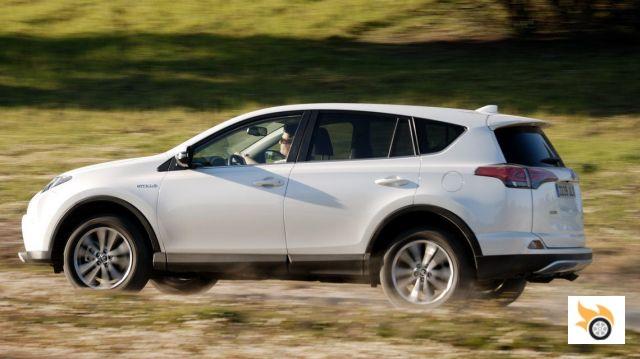
What is the RAV4 Hybrid capable of off-road? At the presentation we took it for a spin around a huge Toledo estate, along groomed dirt tracks. The difficulty was nil, you just had to be a bit careful with the underbody, it's not very far off the ground (177 mm) and its angles of attack, exit and ventral angles are nothing to write home about. It doesn't have a reduction gear, but it has something better: the electric traction.
The angle of attack is 19 degrees, and the departure angle is 22 degrees. Thermal RAV4s have a 23-degree departure angle.
The RAV4 Hybrid can have an electric motor on the front axle, or the same and another motor on the rear axle. The maximum power output doesn't change, because it depends on the power output of the NiMh battery, which is the same in both models. The driver can drive as slowly as he wants, and start, for example, on a patch of ice, without skidding. If there is little charge in the batteries and the petrol engine is running, the e-CVT also makes it possible to move forward, if desired, at a crawl.
One of the advantages of the gearbox is that you can drive at a slower speed, at the cost of putting a lot more power to the wheels. But this feature is a consequence, not a desired feature to make it a good 4×4. The RAV4's all-wheel drive is designed more for the road, and the main benefit is noticeable in the towing capacity, which is doubled (up to 1,650 kg). If you're not going to face variably adverse weather, I don't see much point in paying €3,000 for an extra engine. Other brands charge that kind of money for the driveshaft, the centre differential, the rear differential and two (roughly speaking) axle shafts.
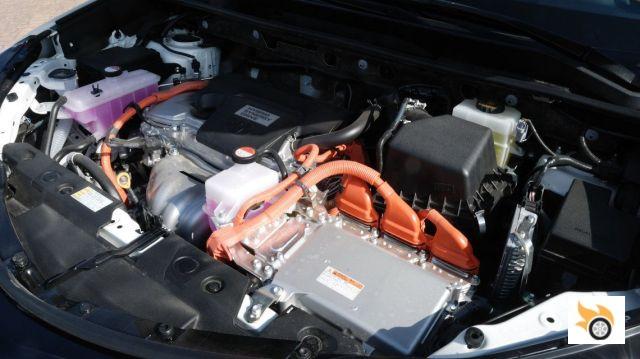
Mind you, the driving was not the same or directly comparable, the 4×4 was at a higher average speed. In short, the RAV4 Hybrid is a car that can occasionally move on dirt tracks, or with little mud, or with some snow, with a minimum of guarantees. If this is going to be the case, the M+S tyres are more suitable. If you are going to drive mostly on roads and motorways, the 4×2 and normal tyres are better. The difference in consumption between one and the other is small, it depends mainly on the added weight of the second engine, 65 kg to be more precise.
It should be quieter than the diesel -which I haven't driven- because it has 3 kg more insulating material and the engine makes less noise, it's a 2.5 VVT-i four-cylinder. Although the unit displacement is large, it's not an unpleasant engine, although some people don't like it under full load. I'm totally used to my hybrid and I don't even notice it anymore. At the end of the day, when you ask an engine to give its all, it has to make noise, so up to that point, everything is normal.
New in a European Toyota is the six-speed preset "sequential gearbox", which Lexus already has, which is actually a management of the e-CVT, a planetary gear. In my opinion, it is a totally dispensable system, whose only useful function is to control a little more the retention of the gasoline engine. The operation is a bit unnatural and any resemblance to a torque converter or a robotic double clutch is coincidental.
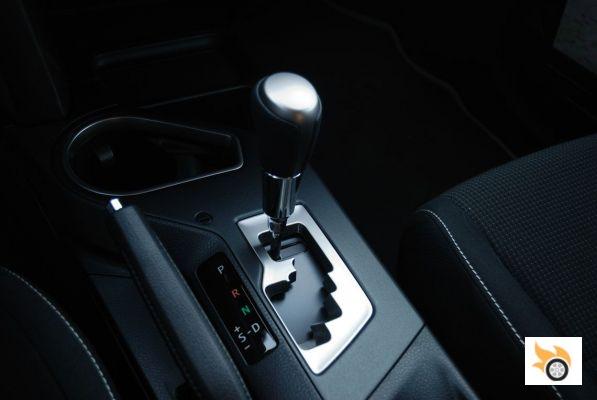
There are drivers who appreciate that by "downshifting" the petrol engine revs more and can be quicker when overtaking if the accelerator pedal is depressed. It may be something relevant on a circuit and with telemetry, but in normal traffic, I am not able to appreciate it. What is gained, half a second? In the Prius, Auris and CT 200h, which don't have this gadget, there is ONE "gear" to hold, the "B". I've never missed a multi-step sequential, because the more you brake, the more it holds. And that's it.
One detail that strikes me is that the RAV4 has the same brakes, no matter which version. It has 296 mm ventilated discs at the front and 281 mm solid discs at the rear. The hybrid can decelerate without using them, only with the electric part, so the life of discs and pads is estimated to be longer. Will it brake better? The petrol 4×4 automatic is up to 170 kg lighter, and the diesel up to 135 kg lighter. Physics is physics, the hybrid is heavier, and under hard braking the electric part hardly adds any stopping potential.
The RAV4 Hybrid has a slimmer anti-roll bar, 18 mm in diameter instead of 23 mm.
Tyres can be either 225/65 R17 or 235/55 R18, depending on equipment. In the best case, 4×2 and 17″, it homologates 4.9 l/100 km of petrol, and in the worst, 4×4 and 18″, 5.1 l/100 km. Getting those consumptions in daily driving is almost science fiction, it has to be all in our favor. A more realistic consumption is 7 litres upwards. The diesel may spend less, of course, but in the long run it's more expensive to maintain.
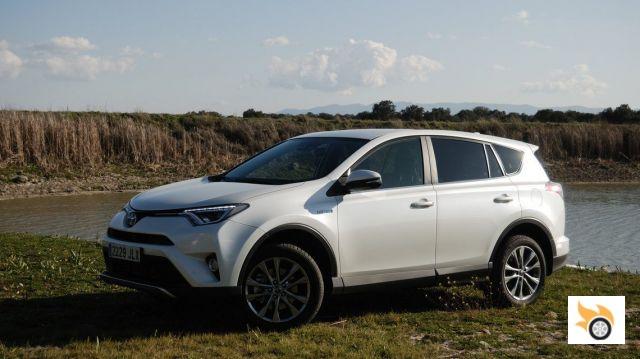
In addition to the hybrid version, the RAV4 has received some improvements with the restyling. The steering is supposed to be more precise due to increased rigidity at the fulcrum points. Suspension-wise, Toyota details that the rear crossmember has been strengthened, the rear suspension is stiffened and sits better. In theory, there is more rigidity and therefore NVH (noise, vibration and harshness) is reduced. It should therefore be better insulated, and a little more comfortable.
As a passenger I had no difficulty falling asleep while a colleague was driving. However, for speeds higher than the legal ones, it doesn't seem to me to be a wonder in terms of silence. For those people who appreciate having a high driving position, for that "feel safe", is something that I have hardly appreciated. It doesn't feel like a particularly tall car, it feels like a higher than normal passenger car, but without exaggeration.
In the long run the RAV4 hybrid is a good idea, if there is a minimum of will on the part of the driver to reduce fuel consumption. If you don't pay attention to the gauges and displays (by the way, the dashboard is almost the same as Lexus') the car won't make spectacularly low consumptions. Hybrid technology reduces fuel consumption, but it is very sensitive to the way you drive, if you make the petrol engine work harder, and without that implying more speed, it will consume more fuel.
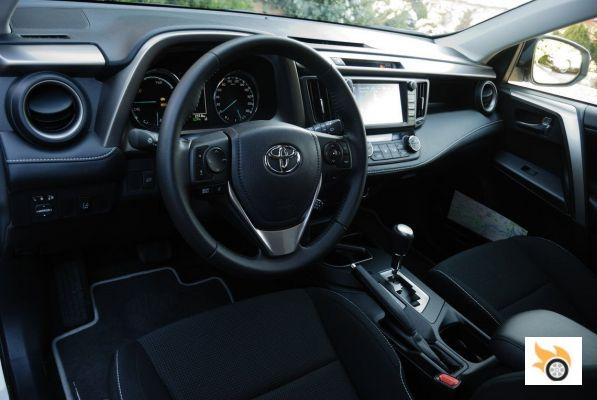
Evolved design, higher quality and technology
The RAV4 receives the usual design language of the latest models, with lower priority and a more emotional look. The headlights can be halogen or LED, in both cases with LED daytime running lights. The taillights also get LEDs. The 17″ and 18″ wheel designs are new and it gets two new colors, Bordeaux Red and Brilliant Blue.
Inside you do notice more changes in a useful sense. Toyota wanted to bolster the perceived quality, and so has restyled the dashboard, centre console, gear lever surrounds, door panels, dashboard and centre armrest. The 7″ central screen is touchscreen and is brought up to date for the Touch 2, Touch 2 & Go (with navigation) and Touch 2 & Go Plus (with navigation and enhanced functions) systems. The lighting is more uniform and the storage compartments are more versatile.
There are four leather options for the interior, with beige and camel being new.
In terms of technological equipment, you can opt for a monitor "panoramic" 360-degree view through four cameras. It is a system similar to that of Nissan, but can make a simulation of helicopter view with a 3D representation of the car on the image, a trick! It is difficult to find this function, it is controlled by a button that is in front of the nose, but "hidden".
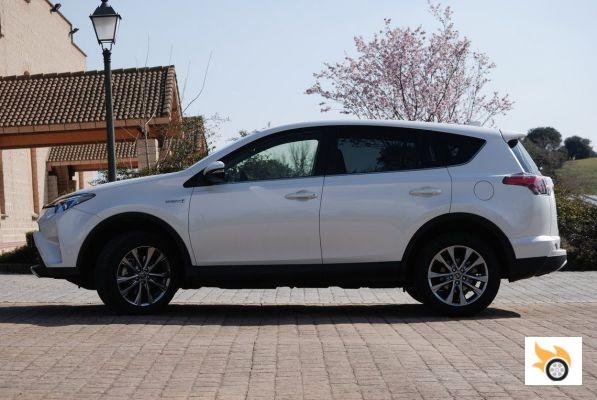
Finally, there are the safety systems. The RAV4 already had BSM (Blind Spot Detection) and RCTA (Rear Cross Traffic Alert). These sensors have been enriched with a video camera, so it gets new functions: Lane Departure Warning (LDA), Road Sign Recognition (RSA) and High Beam Beam Control (AHB).
Commercially speaking, this is called Toyota Safety Sense.
If, in addition, you have front radar, you gain active cruise control (ACC) from 40 km/h, and pre-collision safety system (PCS) with pedestrian detection (up to 30 km/h). The basic models are not eligible for this equipment, it is reserved for the "pata negra". It's a policy of Asian manufacturers that I will never understand in life, only those who pay almost 36,000 euros deserve that extra security? Apparently, and so many other things they don't need at all will go in the lot.
The camera-based security systems are very interesting for day-to-day use, the radar ones not so much. I recognize that it is a joy to use cruise control at a set speed, and that the car goes at the speed that allows traffic without hitting others, but abotaga on a long trip. However, welcome is the system for those who can afford it.
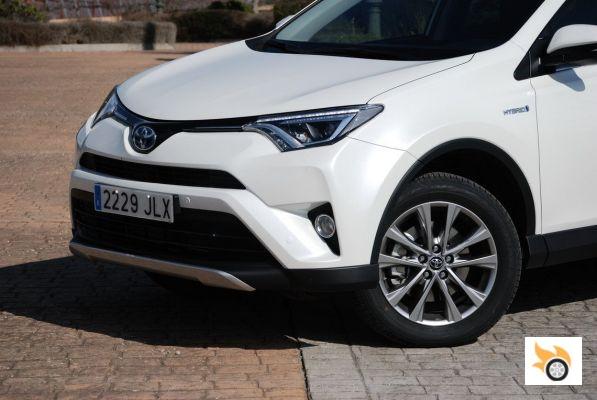
All in all, this is an interesting car, which allows you to have a reasonable cost without having to jump through the hoops of the diesel engine. We'll see if it's a good enough product to corner both petrol and diesel. 80% of hybrid sales for this car in Spain represents about 6,000 units per year. My personal bet is more along the lines of 50-60% at most, remove the idea of diesel in this segment is quite complicated. In addition, there is the significant price difference ....

























